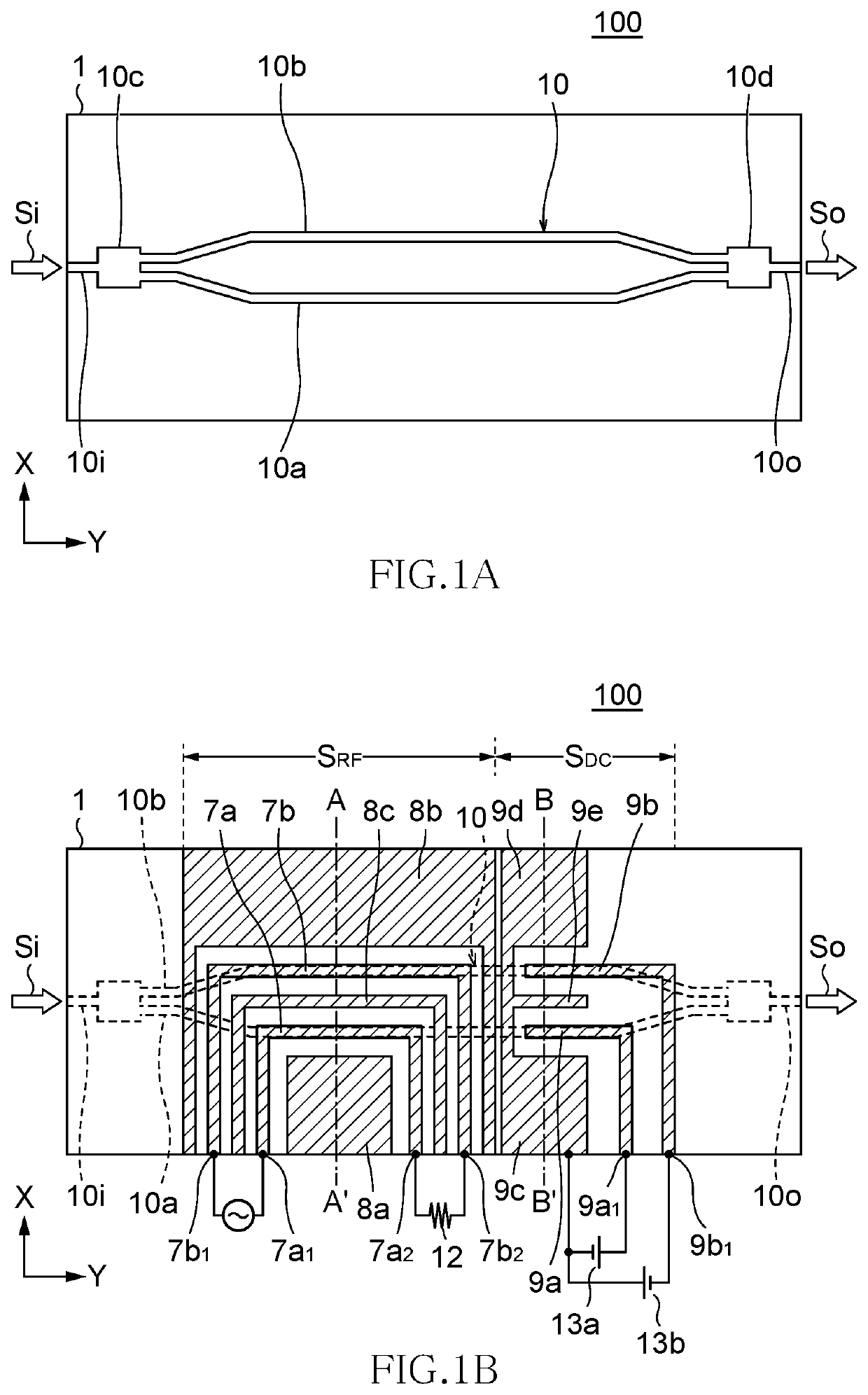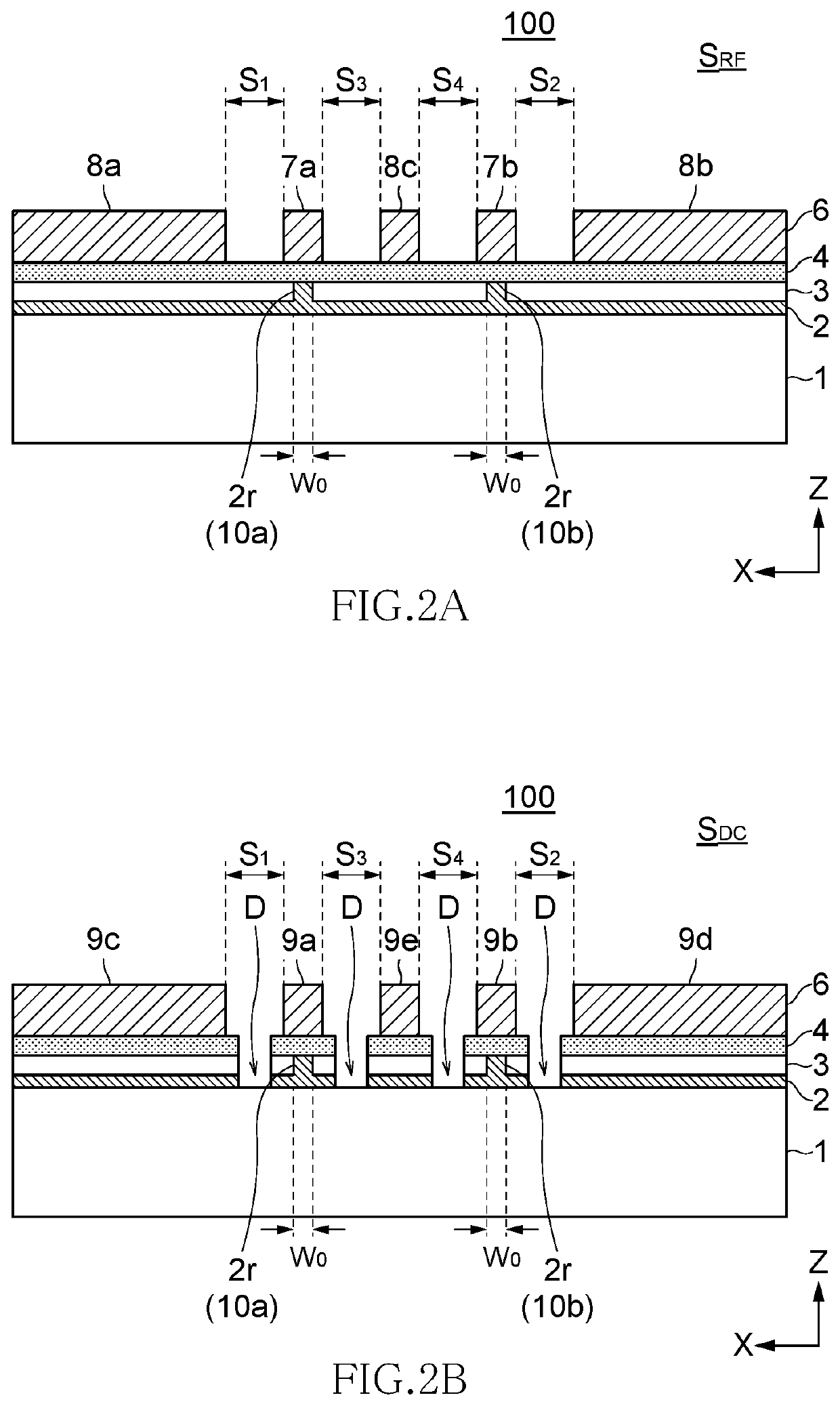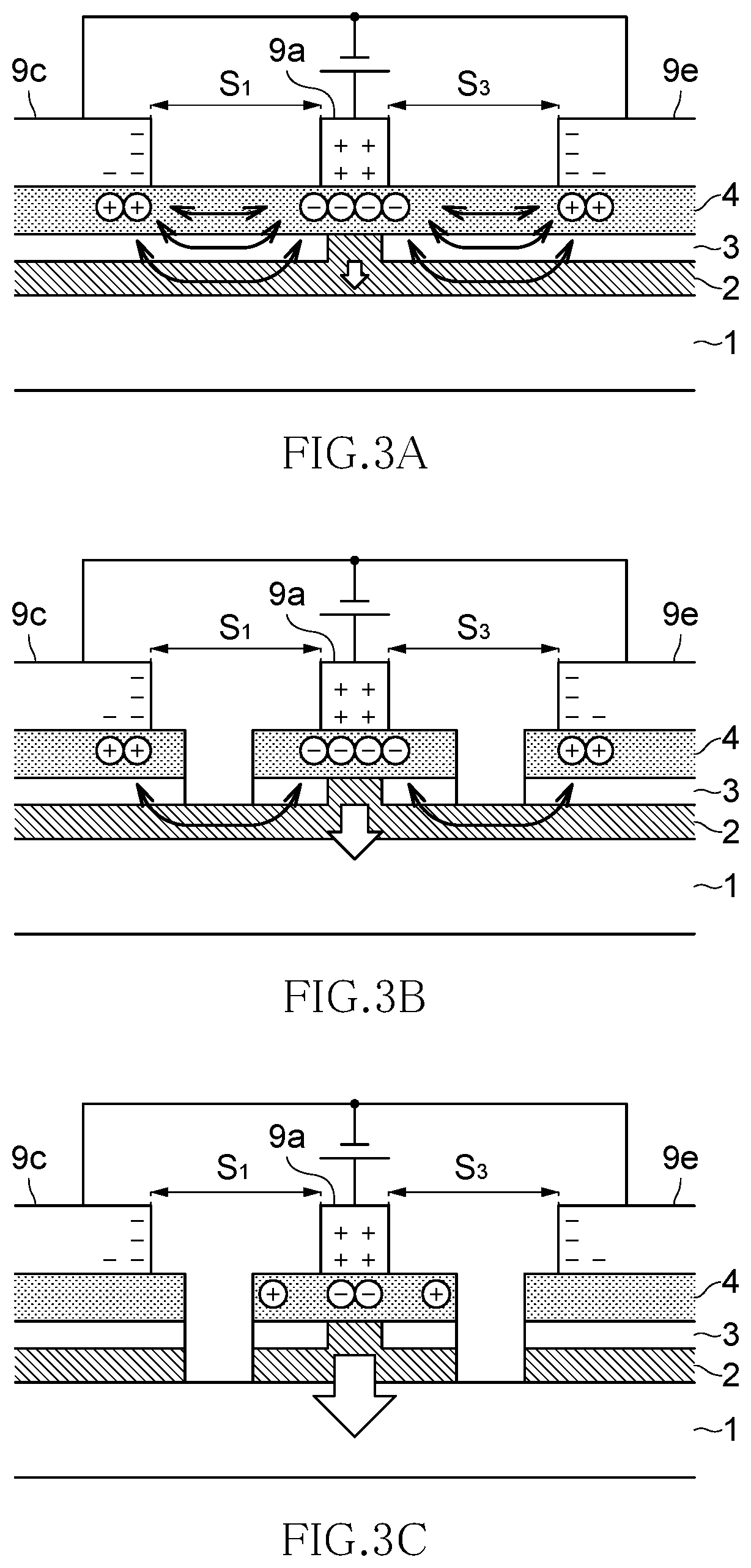Optical modulator
a modulator and optical technology, applied in the field of optical modulators, can solve the problems of limiting the length of high-speed modulation, and the entire length of the modulator is as long as about 10 cm, and achieve the effect of reducing dc drift and stabilizing the structure over a long period of tim
- Summary
- Abstract
- Description
- Claims
- Application Information
AI Technical Summary
Benefits of technology
Problems solved by technology
Method used
Image
Examples
examples
[0118]An acceleration test as to the DC drift was carried out for the optical modulators according to Comparative Examples and Examples. In this acceleration test, a change in drift amount Vdrift / Vbias when a DC bias Vbias was continued to be applied for 24 hours under a high temperature of 140° C. was determined.
[0119]Optical modulators according to Comparative Examples 1A and 1B each have the cross-sectional structure of FIG. 3A, that is, they each have a conventional structure in which the waveguide layer and buffer layer are formed over the entire surface. The buffer layer of Comparative Example 1A is formed of an oxide La—Al—O (composition A) containing La and Al as main components, and the buffer layer of Comparative Example 1B is formed of an oxide Si—In—O (composition B) containing Si and In as main components.
[0120]Optical modulators according to Comparative Examples 2A and 2B each have the cross-sectional structure of FIG. 3B, that is, they each have a conventional structu...
PUM
| Property | Measurement | Unit |
|---|---|---|
| thickness | aaaaa | aaaaa |
| length | aaaaa | aaaaa |
| width | aaaaa | aaaaa |
Abstract
Description
Claims
Application Information
 Login to View More
Login to View More - R&D
- Intellectual Property
- Life Sciences
- Materials
- Tech Scout
- Unparalleled Data Quality
- Higher Quality Content
- 60% Fewer Hallucinations
Browse by: Latest US Patents, China's latest patents, Technical Efficacy Thesaurus, Application Domain, Technology Topic, Popular Technical Reports.
© 2025 PatSnap. All rights reserved.Legal|Privacy policy|Modern Slavery Act Transparency Statement|Sitemap|About US| Contact US: help@patsnap.com



